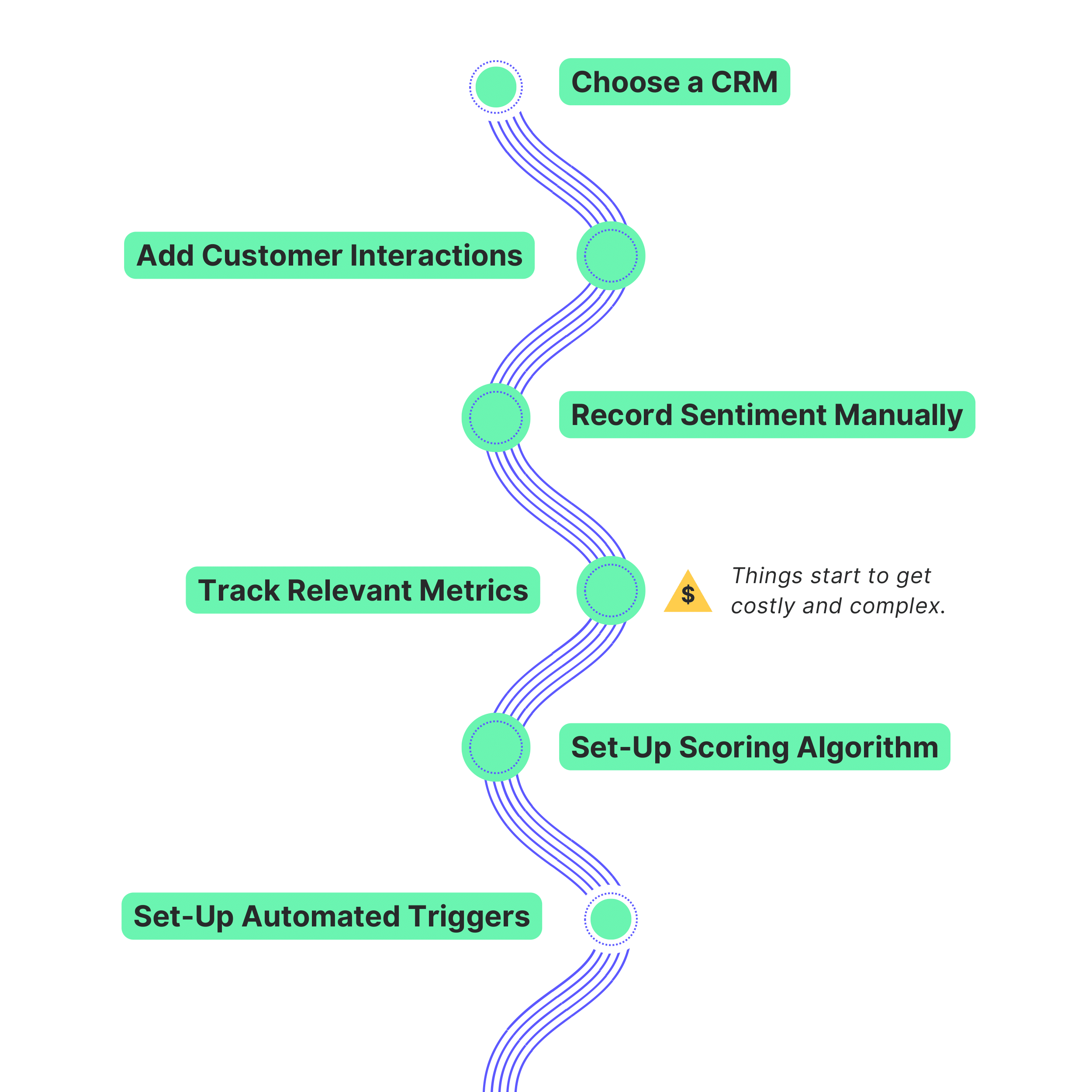Building an effective Customer Health Score can be complex. We’ve broken down the process into six steps — starting off simple and then developing into a more intricate solution.

1. Choose a CRM
Kickstart your journey by implementing a Customer Relationship Management (CRM) system. Your CRM will centralize all customer data and be your single source of truth. Regardless of which CRM you choose, ensure that it aligns with your business needs and growth trajectory.
2. Add Customer Interactions
Once your CRM is in place, you’ll need to populate it with all customer touch points, including emails, meeting transcripts, and support tickets. Consolidating these interactions will allow you to better keep track of the customer journey. To streamline this process, implement an automated email integration between your email provider and your CRM. You can do this either through your CRM’s native integration or by leveraging an engagement software like Apollo.io. Additionally, consider using a software, such as Gong, to automatically integrate meeting notes into your CRM.
If you use Salesforce, we wrote a piece on choosing best email logging solution on that particular platform.
3. Collect Sentiment Manually
Quantifying customer sentiment is key to understanding the satisfaction of your customers. Implementing a simple sentiment scoring system — red, yellow, green — is a quick and intuitive way to visually assess where a customer stands. Check-out Gauge as a cost-effective way to record and track sentiment directly within Salesforce or HubSpot. To maintain consistency, aim to record sentiment at least once a month.
⚠️ Things Start to Get Costly and More Complex Here ⚠️
Taking your health score to the next level involves consolidating various pieces of customer data, meaning you’ll need to spend money to invest in software and team members with data expertise.
4. Track Relevant Metrics
After sentiment, comes objective data. Track the metrics that provide further insights into customer health. Consider product usage data, Net Promoter Scores (NPS), and other KPIs relevant to your business. Start by manually centralizing this data in a spreadsheet, but aim to eventually integrate it into your CRM. By looking at these metrics alongside sentiment, you gain a more nuanced understanding of customer behaviour and satisfaction.
5. Set-Up Scoring Algorithm
With sentiment and metric tracking in place, you can begin to develop a health scoring algorithm. This process will involve leveraging your selected metrics and CRM data to craft a weighted scoring system, typically resulting in one number or letter grade of customer health. To do so, it is necessary to set-up data pipelines and a data warehouse solution to centralize data from various siloed sources. These solutions are often costly and you’ll need the expertise of a data engineer to navigate this process effectively. Subsequently, it will be crucial to iterate on this algorithm in order to keep it relevant as your business evolves.
6. Set-Up Automated Triggers
Lastly, set-up automated playbooks that are triggered by specific conditions of the health score. For example, automate alerts to notify relevant team members when the health score drops below a predetermined threshold. These alerts could also assign a task aimed at boosting customer satisfaction. Not only will these playbooks save time, but it will also facilitate quick responses to at-risk customers.
Ultimately, building a Customer Health Score is a journey that evolves over time. By investing in the right tools and expertise, you can transform raw customer data into actionable insights that drive business success. Embrace the journey, and remember that starting out small is always better than not starting at all.
